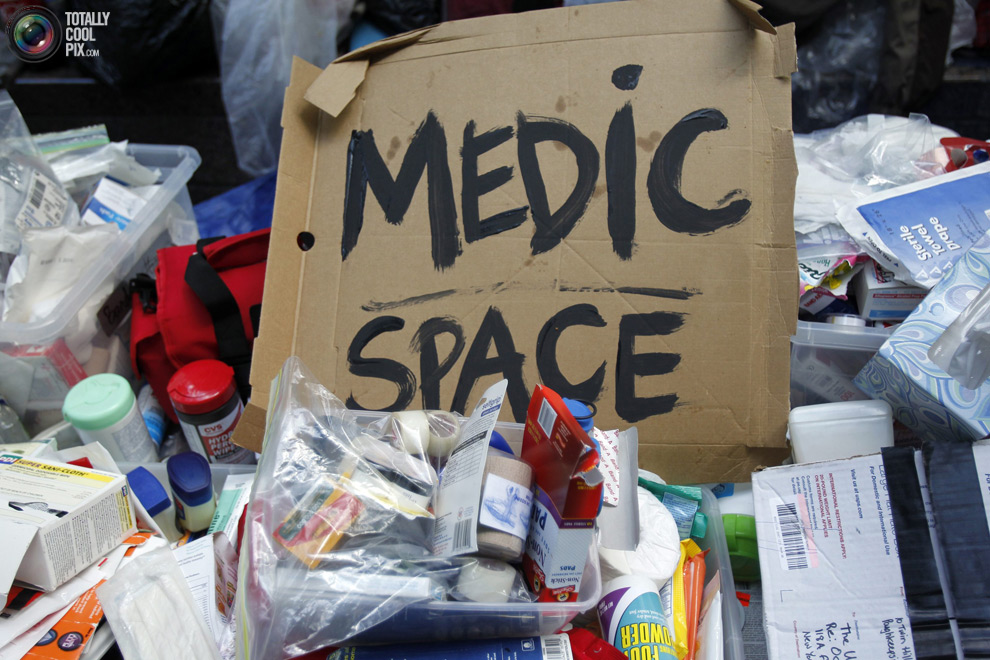How to organize and provide Event First Aid and Street Medicine for large conferences, rallies and demonstrations. The Portland based Black Cross Collective offers training and guides for street medics. From how to treat someone sprayed with pepper spray to recognizing the signs of heat stroke, they explain how to treat aliments common in protests. This guide will explore:
How to ask for consent from an injured person
When to get help
What gear to bring to a protest
How to control a scene
Performing basic first aid
Consent
Do not ever perform first aid without getting permission from the person first. To obtain consent introduce yourself at a level where you can make eye contact without the injured person have to move to see you. Explain what you know and ask if they would like you to call for professional medical help.
Example: “Hi, my name is Tyler and I know basic first aid. Can I help you?”
Getting help
As a street medic you are going into a protest where you will not know how to treat most of the injuries you see. It’s important to recognize when someone is beyond your capabilities. If someone is unconcious, not breathing or acting strangely, you should seek further help. First aid stations, police, other medics and emergency services can all come to your aid in this situation. Never move a person who might have hurt their back or neck.
What to bring
If you a designated medic for an event, make sure that you’re clearly marked. Attaching a large red cross on the back of your jacket or to your sleeve let’s others know you can help. Make sure you are well stocked with any medical supplies that might be needed during the protest. A comprehensive list can be found here. Carry extras of supplies such as non-latex gloves.
Most importantly, bring a buddy. When you see someone in need, your friend can call 911, run for help or direct paramedics towards your location.
Scene control
If your offer to help is accepted, explain calmly and clearly what you are doing and why. Be honest and don’t rush intervention such as food or water if the person may have an internal injury.
When people in a crowd see that someone is hurt, they all want to help. Rather than allowing the crowd to get in the way, enlist people to form a circle facing outward around the injured person. Be polite but authoratative to control the situation.
Help keep the person calm by asking them how they got hurt, what is painful and remind them not to move. You can give this information to a paramedic when they arrive.
Don’t just yell for someone to call 911. People may just assume that its been done already and not do it themselves. Always check to make sure help is on the way.
Basic first aid
The zine An Activist’s Guide to to Basic First Aid explains how to treat ailments that may arise while protesters are detained by police and what can be done, among a host of other useful tips.
Don’t be afraid to ask for professional medical attention or go to a hospital. Basic first aid is important, but severe injuries require more.
Links
St. John’s Ambulance offers first aid throughout Canada.



